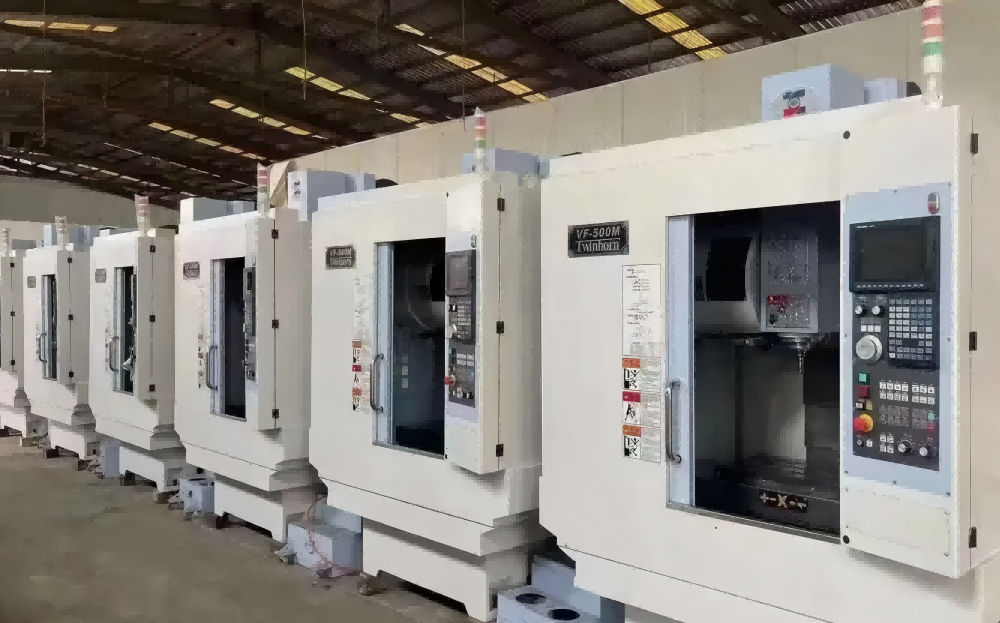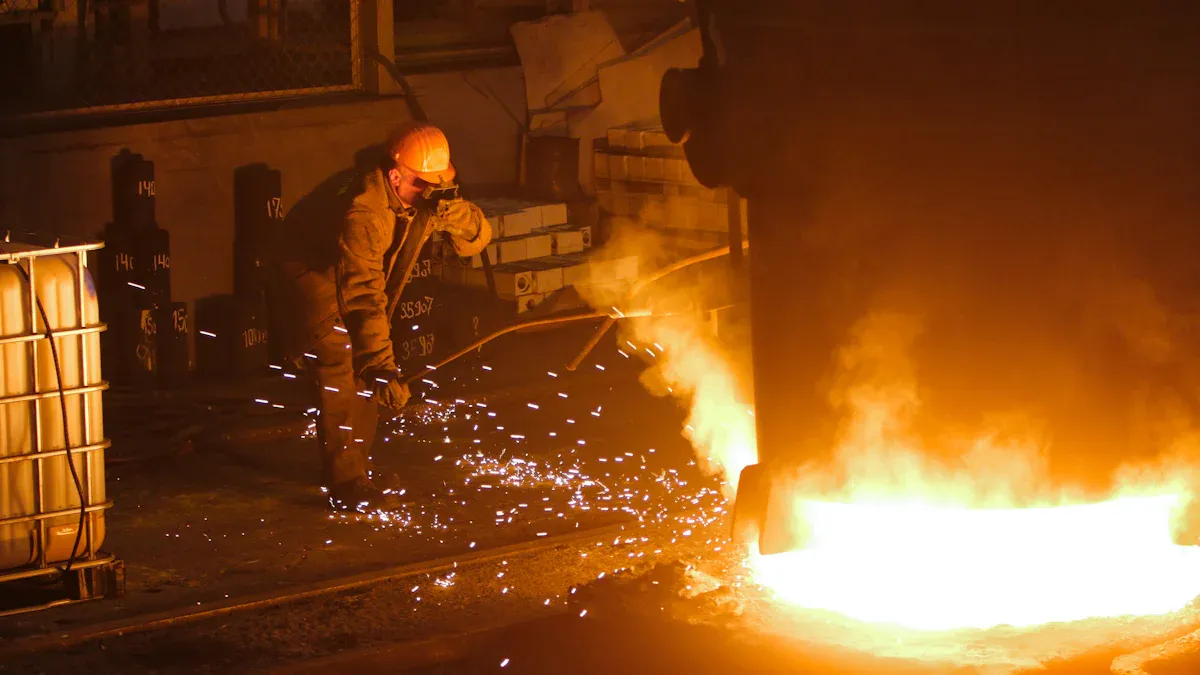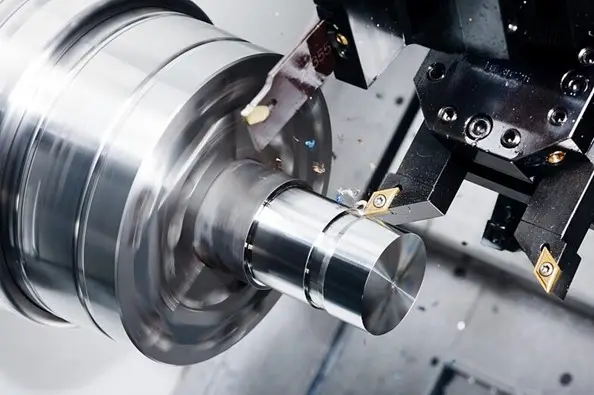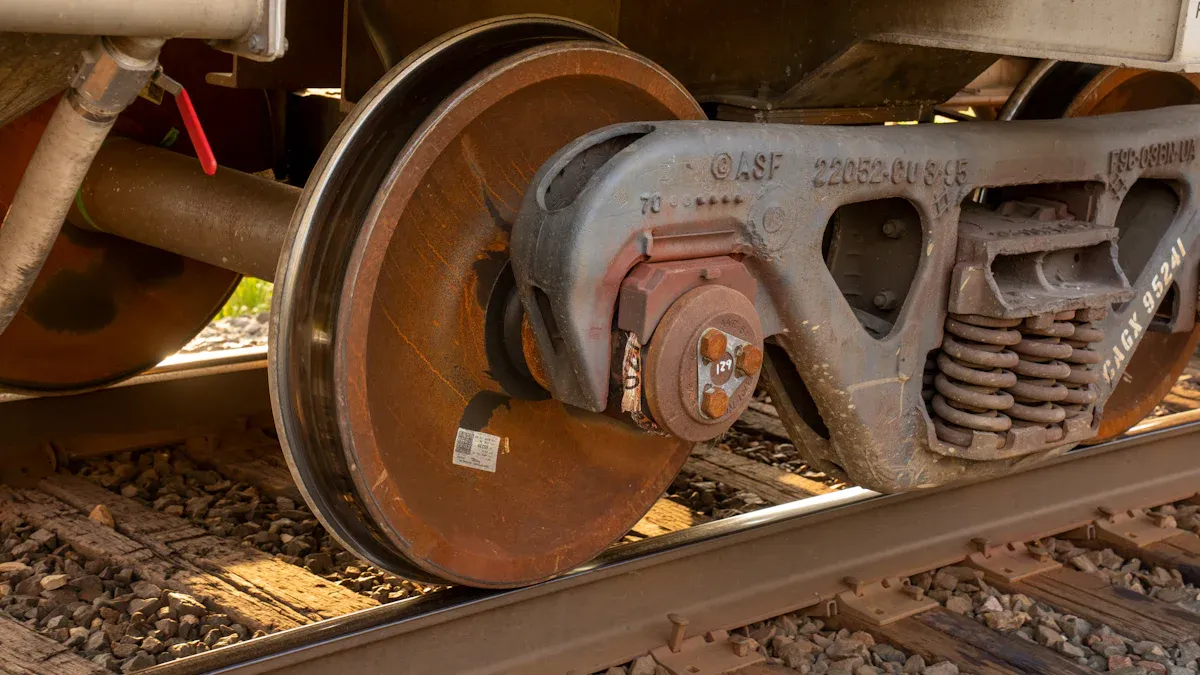Many materials cannot be CNC machined. They may break, melt, or be unsafe. These include ceramics, glass, hardened metals, soft things, very flammable stuff, and things that get damaged by heat. Some examples are:
- Ceramics and glass, like quartz or porcelain
- Rubber and bendy polymers, such as silicone rubber
- Foams and sponge-like things
- Carbon fiber composites
- Very soft metals, like lead or tin
- Unstable things, like wood with big knots
These materials often fail in CNC machining. They can break, bend, or not stay steady.

CNC Machining Limitations
Ceramics and Glass
Ceramics and glass have big cnc machining limitations. These materials are strong but also break easily. When a cnc router cut shapes ceramics or glass, they can crack or chip. Ceramics have a special structure that makes them break suddenly. Cutting these materials can also ruin tools fast. This makes it cost more and slows down work. Tempered glass, quartz, and porcelain do not work well with cnc router cutting.
Table: Challenges with Ceramics and Glass in CNC Machining
| Limitation | Description |
|---|---|
| Brittle Nature | Ceramics and glass break or chip easily under stress. |
| Vulnerability to Damage | Existing stresses can cause cracks or breaks during cutting. |
| Difficulty in Machining | Hardness wears down cutting tools fast, raising costs. |
| Extended Production Time | Complex cutting needs more time than with metals. |
Ceramics can handle heat but still do not work for normal cnc machining. Machines cannot always adjust to these special materials.
Hardened Metals
Hardened metals like tool steel, Inconel, and titanium are hard for cnc machining. These metals are very hard and tough, so they are hard to cut. Tools wear out fast, and cutting takes longer than with soft metals. Some hardened metals, like 17-4 stainless steel or 4140 steel, do not bend but can still chip or break if stressed too much.
- Hardness makes cutting slow and wears out tools.
- Toughness means more tool changes are needed.
- Some metals get even harder as the router cuts.
- Abrasive metals can hurt tools and need more replacements.
| Material | Properties | Challenges in Machining |
|---|---|---|
| Tool Steel | High hardness, wear resistance, toughness | Brittle and prone to chipping under extreme stress, requiring careful handling. |
| Inconel | High-strength, corrosion-resistant nickel alloy | Work-hardens, becomes harder and more brittle, affecting tool life. |
| Titanium | High tensile strength, low density, corrosion resistance | Low heat conductivity and high hardness make cutting difficult, needs special tools. |
Soft Materials
Soft materials like rubber, foam, and some plastics do not work well in cnc machining. These materials can bend, warp, or tear when cut. It is hard to make exact cuts because the material moves. Soft metals like copper, bronze, and brass also have problems, especially at high speeds.
Table: Challenges with Soft Materials in CNC Machining
| Challenge | Description |
|---|---|
| Material Deformation | Soft materials bend or tear under cutting pressure. |
| Difficulty in Tight Tolerances | Less rigid materials make precise cuts difficult. |
| Generation of Burrs and Debris | More chips and swarf clog tools and reduce surface quality. |
| Tool Selection and Maintenance | Choosing and maintaining the right tools is crucial for efficiency. |
Plastics like polycarbonate and nylon can melt or change shape if the router cuts too fast or gets too hot.
Highly Flammable Materials
Highly flammable materials, like some plastics and composites, are dangerous to machine. The heat and rubbing from cutting can make them catch fire. Safety rules like ANSI B11.TR3-2000 and OSHA 1910.212 talk about these dangers. Many shops do not machine flammable materials to avoid fires.
⚠️ Note: Always check if a material is flammable before using a cnc router cut. Fire hazards can cause serious damage and injuries.
Heat-Sensitive Materials
Heat-sensitive materials, like rubber, foam, and some ceramics, cannot take the heat from cnc machining. Rubber loses its shape, and foam is too weak for detailed cuts. Ceramics can break when cut fast or when they get hot.
- Rubber and foam melt or change shape when machined.
- Ceramics can break from fast router cuts.
- Heat-sensitive plastics, like acrylic, can get soft or lose shape.
These materials usually do not work for cnc machining. They are not good for most cnc router jobs.
Why These Materials Are Unsuitable
Brittleness and Cracking
Ceramics and glass break easily in cnc machining. Their atoms are packed tightly together. This makes them brittle and easy to crack or chip. Scientists have looked at this problem for a long time. The table below lists some studies about brittleness and cracking in these materials:
| Study Title | Authors | Journal | Year | Findings |
|---|---|---|---|---|
| Micromechanics of Machining and Wear in Hard and Brittle Materials | BR Lawn | Proc. Roy. Soc. Lond | 1967 | Looks at how cracks form in brittle materials when pressed. |
| Sliding Contact Fracture on Glass and Silicon | HJ Leu, RO Scattergood | J. Mater. Sci | 1988 | Studies how glass and silicon break when rubbed. |
| Microfracture About Scratches in Brittle Solids | MV Swain | Proc. Roy. Soc. Lond | 1979 | Talks about tiny cracks that happen when brittle things get scratched. |
Glass and ceramics have strong bonds between atoms. These bonds do not let atoms move much. So, these materials break instead of bend. When a cnc tool cuts them, cracks can start and spread fast.
Deformation or Melting
Soft materials like rubber, foam, and some plastics lose their shape in machining. They can bend, smear, or melt from heat and pressure. Plastics may warp or bend after machining because of stress inside. Heat-sensitive materials, like some plastics and foams, melt or change shape if the tool gets too hot.
- Soft materials bend easily because they are not stiff.
- Heat builds up quickly and causes melting.
- Some plastics cannot handle strong forces and smear instead of cutting cleanly.
A study with high-speed filming showed soft materials stretch and get softer where the tool cuts. This causes more damage and bad results.
Fire and Safety Risks
Highly flammable materials can be very dangerous in machining. Fast cutting makes a lot of heat and can start a fire, especially with a dull tool. Some coolants used in cnc machines can also catch fire if not used right. Dust from machining can build up and explode if it gets hot enough.
⚠️ Tip: Always check if a material can catch fire before machining. Use fire safety systems and teach workers how to stay safe.
Instability and Inconsistency
Heat-sensitive materials can be unstable and change during machining. Too much heat can hurt these materials and make them change size or shape. Bad cooling or wrong settings can make things worse. Heat-sensitive materials may not stay the same from one part to another, causing mistakes.
- Heat damage happens when materials get too hot.
- Not enough cooling makes materials change size.
- Low thermal stability makes machining hard to control.
These problems make cnc machining a bad choice for many heat-sensitive and highly flammable materials.
Alternatives to CNC Machining
Other Manufacturing Methods
Some materials are too hard or fragile for cnc machining. Other ways work better for these materials. Ceramics and glass often need special cutting methods. The table below lists some common ways to shape them:
| Method | Description |
|---|---|
| Liquid Abrasive Waterjet Cutting | This method shapes ceramics without touching them. It is good for detailed patterns and quick samples. It does not cause heat damage. |
| Electrical Discharge Machining | This process uses electric sparks to make complex shapes in conductive ceramics. It does not touch the material. |
| Laser Beam Cutting | This method uses a strong laser to cut. It is accurate and does not hurt the inside of ceramics or glass. |
| Friction Cutting | This way uses heat from rubbing to slice ceramics. It is good for rough shapes but not for detailed work. |
| Microwave Cutting | This method uses special waves to heat small areas. It works for rough shapes, not for fine details. |
| Thermally-Assisted Turning | This process heats ceramics to make them easier to cut. It can be hard on tools and may not give a smooth finish. |
Other ways like forging, milling, additive manufacturing, and waterjet cutting help with metals, plastics, and composites. Each method has things it does well and things it does not.
| Method | Advantages | Disadvantages |
|---|---|---|
| Forging | Makes strong parts with few problems. The material is better. | Not all materials work. It costs a lot to start. |
| Milling | Simple and can do many jobs. It is cheaper for small amounts. | It is not as exact. It needs more work from people. |
| Additive Manufacturing | Good for quick samples and flexible designs. It does not waste much. | Not all materials work. It is slower than cnc for big jobs. |
| Laser Cutting | Fast and exact. Cuts are clean and tools cost less. | It cannot cut thick things. It does not work for 3D shapes. |
| Waterjet Cutting | No heat damage. It works on many materials and makes clean cuts. | It is slower than cnc. Not all materials work. |
💡 Tip: Always check what a cnc router can do before picking a cutting method. Some special cnc machines can cut tricky materials, but safety is always most important.
Material Substitution
Sometimes, using a different material is the answer. Engineers pick materials that are strong or flexible like the original but work better with cnc machining. The table below shows some good choices:
| Material Type | Mechanical Properties | Key Benefits |
|---|---|---|
| High-Stiffness Plastics | These are strong and stiff like metals. | They are lighter, easy to shape, do not rust, and cost less. |
| PAI/Torlon | Very strong and handles heat well. | Great for exact engineering jobs. |
| PEEK | Resists chemicals and is very strong. | Good for tough jobs that need high performance. |
| PEI/Ultem | Handles heat and is strong. | Works for many engineering uses. |
| Reinforced Nylons | Strong and lasts a long time. | Cheaper than metals and still works well. |
| CFRP | Very strong but light. | Good for parts that need to be light and strong. |
Picking the right material keeps the project safe and saves money.
Consulting Experts
When working with new or tricky materials, it helps to ask experts. Many groups can help with cnc machining, safety, and testing. The table below lists some groups that offer these services:
| Organization | Services Offered |
|---|---|
| Machine Safety Specialists (MSS) | They give advice on machine safety and test materials. They also teach about OSHA and ANSI rules. |
| Camco Precision Machining | They help with cnc machining and give expert advice for exact projects. |
| Rimkus Materials Testing | They study why materials fail, check for rust, and test materials. |
Experts help with design, picking materials, and planning. They also check safety and quality. Services include help with design, engineering, material advice, and checking quality. Getting help from professionals gives the best results and keeps everyone safe.
Limitations of CNC Machining
Material Compatibility
CNC machining cannot work with every material. Some materials, like ceramics and glass, break very easily. Others, like rubber or foam, can bend or melt from heat. Engineers need to check if a material can handle the stress and heat from cnc machines. For example, machining titanium alloys needs special tools and careful planning. Many shops do not use materials that change shape or can catch fire. They know these problems can cause bad results or safety risks.
A table below shows common material compatibility limitations:
| Material Type | Limitation Example | Result |
|---|---|---|
| Ceramics & Glass | Brittle, cracks under pressure | Breaks or chips |
| Soft Polymers | Deforms or melts with heat | Warps or smears |
| Hardened Metals | Wears out tools quickly | High cost, slow process |
| Flammable Materials | Ignites from friction or heat | Fire hazard |
Engineers pick materials that stay strong and do not change shape. They avoid materials that get bigger or smaller when heated. These limits help keep projects safe and working well.
Process Constraints
CNC machining also has limits in how it works. Machines can only go so fast and use certain tools. Some shapes are too hard for cnc tools to make. Small parts can break or move during cutting. Large parts may not fit inside the machine. CNC machining has problems like tool wear, heat, and shaking. These problems can mess up the finished part.
Operators watch for these limits. They use coolants to keep things cool. They change tools often so they do not wear out. They plan cuts to stop shaking. These steps help control problems and make better parts.
⚠️ Note: Every cnc project needs good planning. Knowing the limits of cnc machining helps engineers avoid mistakes and keeps everyone safe.
Not all materials are good for cnc machining. Knowing this can stop expensive problems. Before a project, manufacturers do some checks. They look at what the material can do and what the project needs. They see if it is strong, if it can take heat, and if it looks good after cutting. They also think about how much money they have and what the part will do.
They ask if the part needs to be light or not rust. They check if the material fits the project’s price. If they are not sure, teams ask experts for help. They pick materials that save money and use online tools to get prices. They also talk to different sellers. Picking safe and smart materials makes the project better.
FAQ
What happens if someone tries to CNC machine glass?
Glass often cracks or chips during CNC machining. The tool can break the surface easily. Most shops use other methods, like waterjet cutting, for glass parts.
Can CNC machines cut rubber or foam?
Rubber and foam bend and tear when cut by CNC machines. These materials do not hold their shape well. Waterjet or laser cutting works better for soft materials.
Are there any CNC machines that work with ceramics?
Some advanced CNC machines use diamond tools for ceramics. These machines cost more and need special care. Most shops choose waterjet or laser cutting for ceramics.
Why do flammable materials pose a risk in CNC machining?
Flammable materials can catch fire from heat and friction. Sparks or hot tools may start a fire. Shops avoid these materials to keep workers and equipment safe.




